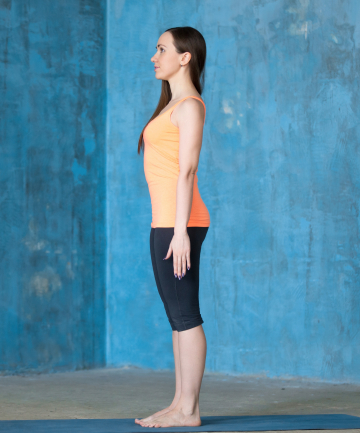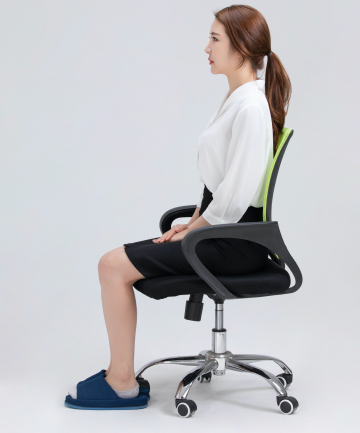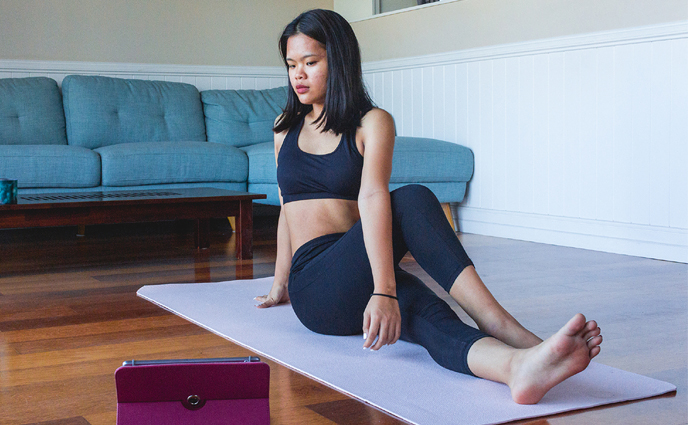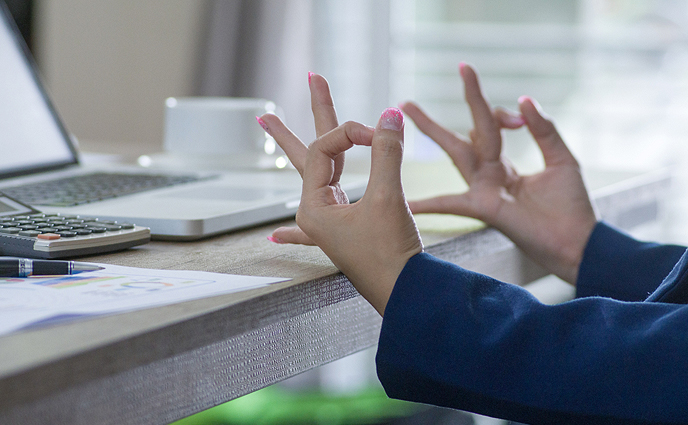We've all been told to stand up straight or to buy the right ergonomic office chair, but just how important is maintaining good posture throughout the day? With expert guidance, we're uncovering some of the clear — and sometimes subtle — signs that your posture isn't ideal, as well as how ongoing poor posture can wreak havoc on our bodies in the short and long term. And of course, we're offering some simple and effective ways you can remedy the issue starting today.
Image via Westend61/Getty
Image via Westend61/Getty
Poor posture is one of those things that doesn't really seem to matter until, well, it really matters, and symptoms become abundantly clear.
"Your body is resilient and may be able to compensate for poor posture for many years before you start to see symptoms," notes Sean Joyce, a physical therapist with Hudson Medical + Wellness. "[With ongoing poor posture], you will first notice soft tissue and fascial tightness around a joint. Close to follow are abnormal movement patterns as a means of compensation for decreased range of motion."
These initial issues can typically be corrected without the need for invasive treatment. However, when poor posture persists for many years, your body starts undergoing real changes in order to adapt. These include "capsular and ligamentous shortening in addition to bony adaptations," notes Joyce. Such issues aren't so easily corrected without the assistance of aggressive treatment.
Over the long term, poor posture ultimately causes severe misalignments in the body that cause real pain — sometimes so bad that it can be disabling or life-impairing.
Image via Westend61/Getty
"Your body is resilient and may be able to compensate for poor posture for many years before you start to see symptoms," notes Sean Joyce, a physical therapist with Hudson Medical + Wellness. "[With ongoing poor posture], you will first notice soft tissue and fascial tightness around a joint. Close to follow are abnormal movement patterns as a means of compensation for decreased range of motion."
These initial issues can typically be corrected without the need for invasive treatment. However, when poor posture persists for many years, your body starts undergoing real changes in order to adapt. These include "capsular and ligamentous shortening in addition to bony adaptations," notes Joyce. Such issues aren't so easily corrected without the assistance of aggressive treatment.
Over the long term, poor posture ultimately causes severe misalignments in the body that cause real pain — sometimes so bad that it can be disabling or life-impairing.
Image via Westend61/Getty
Understanding what poor posture looks like is step number one in both prevention and early correction. Sridhar Yalamanchili, a physical therapist with the Atlantic Spine Center in New Jersey, recommends standing in front of a mirror with equal weight on both feet.
"Starting from your head, look for the following signs: a forward head with chin protruding, rounded shoulders, an exaggerated lower back position causing the stomach to protrude out, and an inability to keep weight even on both feet even with a conscious effort," says Yalamanchili.
Some subtle signs you might notice throughout the day include soreness around your neck, tightness in your shoulders, lower back pain, and stiffness in your hips and sometimes down through your legs. Yalamanchili says these can all point to muscle imbalances from bad posture.
Image via Image Source/Getty
"Starting from your head, look for the following signs: a forward head with chin protruding, rounded shoulders, an exaggerated lower back position causing the stomach to protrude out, and an inability to keep weight even on both feet even with a conscious effort," says Yalamanchili.
Some subtle signs you might notice throughout the day include soreness around your neck, tightness in your shoulders, lower back pain, and stiffness in your hips and sometimes down through your legs. Yalamanchili says these can all point to muscle imbalances from bad posture.
Image via Image Source/Getty
It's important to note that all bodies are different and that we each assume our own "natural posture," which varies from person to person. Still, there are some rough guidelines that everyone can follow.
"Your feet should be pointed straight forward and hip width apart. The arches of your feet should be sitting off of the ground, and your kneecaps should be pointing slightly outward. This means your hip external rotators are actively maintaining lower extremity posture," notes Joyce. "Your glutes should be holding tension to ensure your hips do not tilt forward and that your lumbar spine is not in an extended position."
In addition, he notes that your core should be holding tension, which helps further brace your lumbar spine and anchors down your ribs. This helps build a strong foundation for your torso to sit on.
Moving up your body, Joyce says your shoulder blades should be relaxed down (away from your ears) and slightly inward (toward your spine). Lastly, your chin should be slightly tucked with eyes facing forward with your line of sight parallel to the ground.
"In a perfect world, from a lateral view you would be able to draw a vertical line through the ear, dissecting the shoulder joint, through the lumbar spine, slightly anterior to the midline of the knee, and just anterior to the ankle joint," he says.
Image via fizkes/Getty
"Your feet should be pointed straight forward and hip width apart. The arches of your feet should be sitting off of the ground, and your kneecaps should be pointing slightly outward. This means your hip external rotators are actively maintaining lower extremity posture," notes Joyce. "Your glutes should be holding tension to ensure your hips do not tilt forward and that your lumbar spine is not in an extended position."
In addition, he notes that your core should be holding tension, which helps further brace your lumbar spine and anchors down your ribs. This helps build a strong foundation for your torso to sit on.
Moving up your body, Joyce says your shoulder blades should be relaxed down (away from your ears) and slightly inward (toward your spine). Lastly, your chin should be slightly tucked with eyes facing forward with your line of sight parallel to the ground.
"In a perfect world, from a lateral view you would be able to draw a vertical line through the ear, dissecting the shoulder joint, through the lumbar spine, slightly anterior to the midline of the knee, and just anterior to the ankle joint," he says.
Image via fizkes/Getty
If you work an office job or if you're in school, you probably find yourself sitting quite a bit. When doing so, "your head should be over your shoulders with your shoulders over your pelvis," notes Dr. Rahul Shah, a board-certified orthopedic spine and neck surgeon. Yalamanchi adds that it's also best to maintain a 90-degree angle at the hips and knees, and to keep your feet flat on the floor.
Finally, Dr. Shah says, "While working at a desk, it is important to switch up your position from time to time so that you don't fatigue your back or shoulders." Try standing up and walking around once an hour. Bonus points for doing some stretches! This will also give your eyes a break from the screen!
Image via PROTOPHOTO/Imazins /Getty
Finally, Dr. Shah says, "While working at a desk, it is important to switch up your position from time to time so that you don't fatigue your back or shoulders." Try standing up and walking around once an hour. Bonus points for doing some stretches! This will also give your eyes a break from the screen!
Image via PROTOPHOTO/Imazins /Getty









